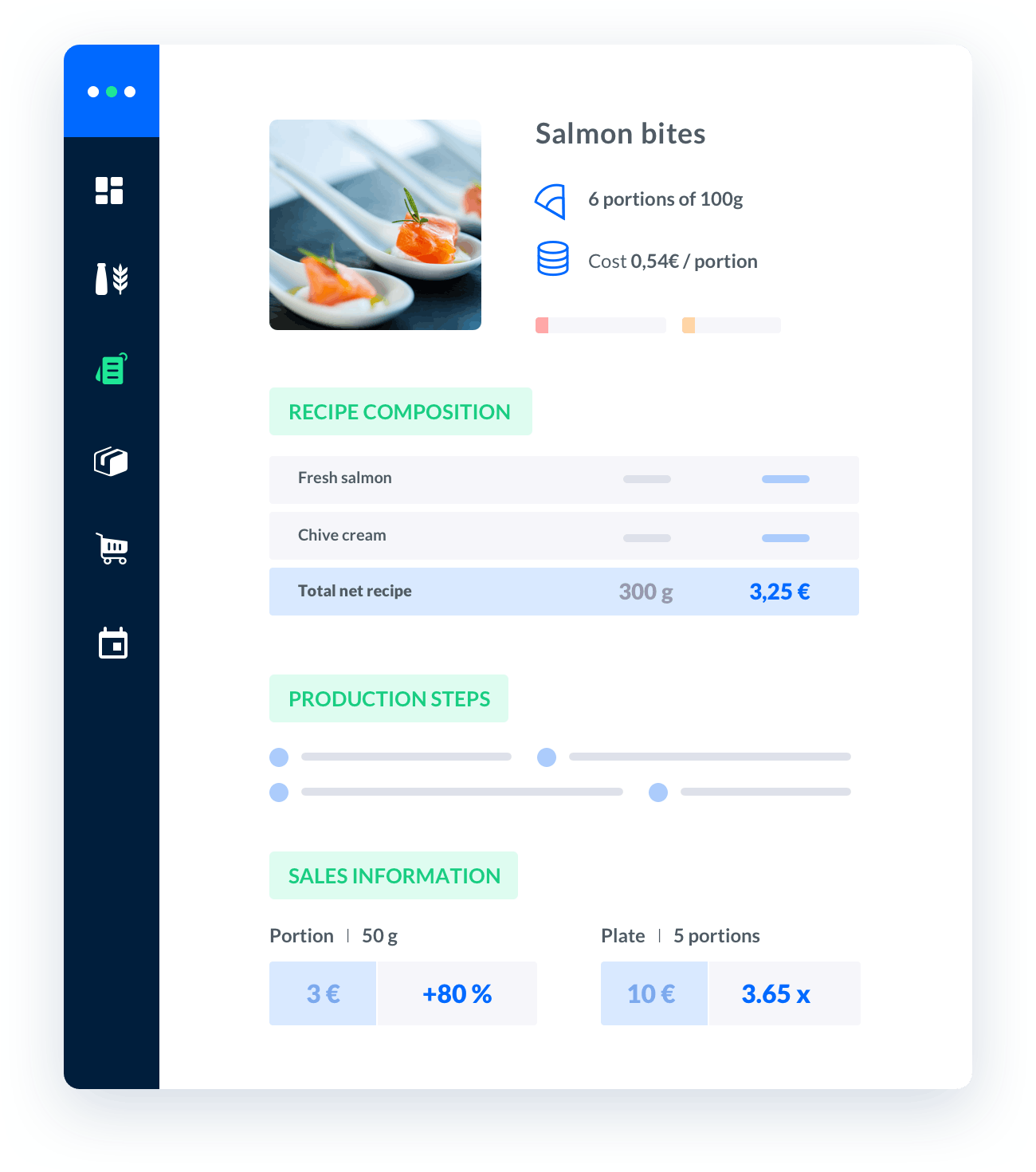how to calculate yield percentage in food
Yield percentage is a crucial metric in the food industry as it helps to determine the efficiency of food production processes and the overall profitability of a business.Whether you are a restaurant owner, a food manufacturer, or simply interested in understanding how to calculate yield percentage in food, this comprehensive guide will provide you with the necessary insights and step-by-step instructions.

Melba: the food cost app to optimize the profitability of your restaurant
Discover how to optimize the profitability of your restaurant with melba

The ultimate guide to food cost restaurant
Learn more about the food cost basis and how to reduce your food cost percentage
Yield percentage is a crucial metric in the food industry as it helps to determine the efficiency of food production processes and the overall profitability of a business. Whether you are a restaurant owner, a food manufacturer, or simply interested in understanding how to calculate yield percentage in food, this comprehensive guide will provide you with the necessary insights and step-by-step instructions.
Understanding Yield Percentage
Yield percentage, also known as food yield, refers to the percentage of usable or edible product obtained from a specific raw ingredient or batch of ingredients. It is a measure of the conversion rate from raw materials to finished products, taking into account any waste, trimmings, or by-products generated during the production process.
Factors Affecting Yield Percentage
Several factors can influence the yield percentage in food, including:
- The quality and freshness of the raw ingredients
- The cooking or processing method employed
- The skill and efficiency of the personnel involved
- The type of equipment and tools used
- The recipe or formulation being followed
Calculating Yield Percentage
To calculate the yield percentage in food, you need to follow a straightforward formula:
Yield Percentage = (Usable or Edible Weight / Total Weight of Raw Ingredients) x 100
Step-by-Step Instructions
Step 1: Weigh the Raw Ingredients
Start by accurately weighing the total amount of raw ingredients that you will be using in your recipe or production process. Ensure you include all ingredients, including any bones, skin, or other inedible parts that may contribute to the overall weight.
Step 2: Determine the Usable or Edible Weight
After processing the raw ingredients, you need to determine the weight of the final product that is usable or edible. This can be achieved by removing any inedible parts, such as bones or peels, and weighing the remaining edible portion.
Step 3: Calculate the Yield Percentage
Using the formula mentioned earlier, divide the usable or edible weight by the total weight of the raw ingredients, and then multiply the result by 100 to obtain the yield percentage.
Example Calculation
Let's consider an example to illustrate the calculation:
- Total weight of raw ingredients: 1000 grams
- Usable or edible weight: 800 grams
By applying the formula:
(800 grams / 1000 grams) x 100 = 80%
In this example, the yield percentage is 80%, indicating that 80% of the raw ingredients were converted into usable or edible product.
Importance of Yield Percentage in the Food Industry
The yield percentage is a valuable metric for various reasons:
- Cost Control: By accurately calculating the yield percentage, businesses can better manage their costs by understanding the amount of raw ingredients required to produce a specific quantity of finished goods.
- Recipe Standardization: Knowing the yield percentage allows chefs and food manufacturers to standardize recipes, ensuring consistent quality and quantity across different batches or production runs.
- Waste Reduction: Monitoring the yield percentage helps identify areas where waste is occurring, enabling businesses to implement strategies to minimize waste and optimize efficiency.
- Profitability Assessment: Yield percentage directly impacts the profitability of a food business. By maximizing the yield percentage, companies can increase their revenue and profitability.
Tips for Improving Yield Percentage
To improve the yield percentage in food production, consider the following tips:
- Source high-quality ingredients to minimize waste and maximize usable product.
- Train staff on efficient cooking and processing techniques to minimize unnecessary trimmings or loss during preparation.
- Regularly maintain and calibrate equipment to ensure accurate measurements and minimize product loss.
- Review recipes and formulations to identify opportunities for optimization and waste reduction.
- Implement portion control measures to reduce over-portioning and excessive waste.
Conclusion
Calculating the yield percentage in food is a fundamental practice in the catering and food industry. By understanding and effectively managing the yield percentage, businesses can enhance their profitability, minimize waste, and maintain consistent product quality. Remember to accurately weigh the raw ingredients, determine the usable weight, and apply the yield percentage formula to obtain actionable insights into your food production processes.






